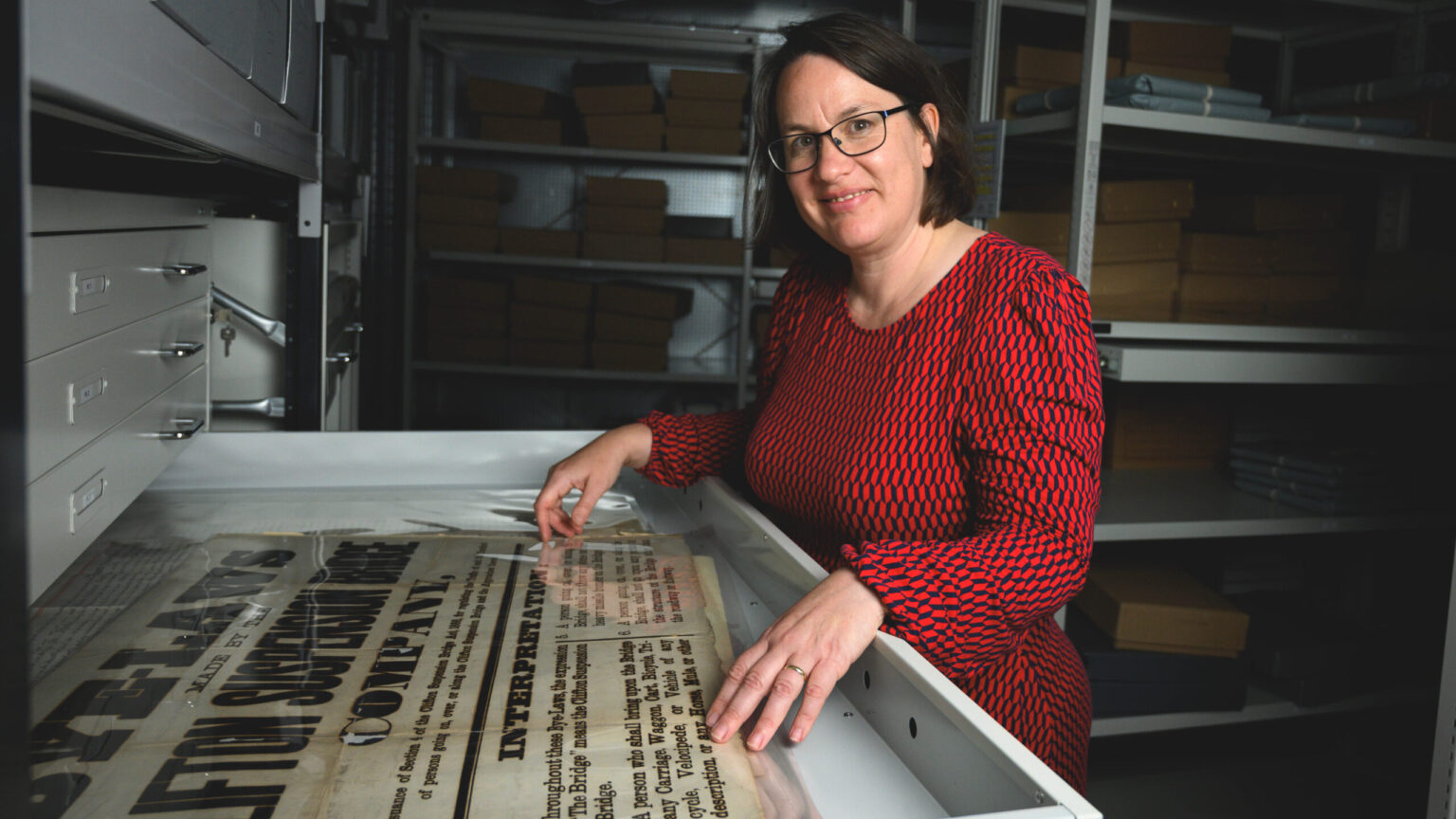Enjoy this article?
Most Museums Journal content is only available to members. Join the MA to get full access to the latest thinking and trends from across the sector, case studies and best practice advice.

Located next to Bristol’s most iconic landmark, Clifton Suspension Bridge & Museum tells the story of how the structure across the Avon Gorge was built, and houses a collection of bridge-related documents and memorabilia.
To celebrate gaining Accreditation earlier this year, Clifton Suspension Bridge Trust took the decision to rebrand the venue from a visitor centre to a museum. Museums Journal spoke to museum archivist Hannah Little to find out more.
In September we celebrated our new Accreditation status by changing our name from ‘Visitor Centre’ to ‘Clifton Suspension Bridge & Museum’.
Previously visitors would sometimes think that our building was a tourist information office, and while we do provide information about the local area and are happy to answer questions, everything we do is centred around Clifton Suspension Bridge and we wanted to better communicate our focus on the bridge’s history and historical collections.
On a more practical level, it gave us an opportunity to refresh our branding – our logo was over 20 years old and was difficult to apply to social media.
We have a dedicated team of volunteers who are proud to share their knowledge of the bridge, and we know that recognition of their work towards the development of our offer as an Accredited museum is a badge of honour.
Behind the scenes, Accreditation is a useful tool for internal focus and advocacy – particularly when it comes to managing our collections. Not only does it codify good practice, but also it helps to be able to point to a standard and say: “It’s not just my personal whim or idea to do this – it is something necessary and good shared by the profession.”
The process means that you also have a structure (and deadlines!) in which to develop and implement policies and procedures throughout the organisation.
The external support from South West Museum Development throughout the process was great. Peer support is so helpful, especially when you are small organisation. It’s also been invaluable for planning: we now know more about what we are doing and where we are going as an organisation.
One of the significant challenges was Covid, however, we were given an additional year in which to complete our application. Another challenge was not having any permanent dedicated storage.
This was resolved by building onsite a secure archive vault. It’s four-hour fire resistant and has been designed on passive principles so we can maintain a stable environment using minimal energy.
For the first time it is enabling us to bring all our collections into one controlled physical space – now collections management is a lot easier, and we can demonstrate that we are preserving our collections for future generations.
The Clifton Suspension Bridge itself is our most cherished and preserved historical object, but within the collections themselves highlights include a sketch of the bridge being constructed in 1839; Victorian stereoscopic photographs of our bridge and bridges from around the world (many which no longer exist); and a piece of Brunel’s original iron bar (or ‘suspended traveller’) that was used to help transport workmen across the gorge in the 1830s.
We also have humbler everyday items – old tickets for horses and sheep and a vast number of postcards from the early 20th century. These show how things like transport, communication and money have changed so dramatically even in the last few decades – tangible things like tickets, tokens and coins are becoming less common.
We recently acquired a letter from Isambard Kingdom Brunel giving his opinion of a rival American design for Clifton Suspension Bridge; it’s great as you can really hear his voice and personality come through. We knew that the design and the offer to finish the bridge from the American engineer, E.W. Serrell was rejected – but now we know why.
We are currently working on refreshing our exhibition space to display more objects and tell new stories in different ways, but in the meantime, we are encouraging visitors to engage with our online archive, or digital exhibitions and audio tours on the Bloomberg Connects app – or visit our new reading room, where people can ask to see items from storage.
Large iconic structures like Clifton Suspension Bridge are dependent on the continuous actions of lots of people. Often the names of workers and ordinary folk are not recorded, and the refurbishment has given us an opportunity to rectify this a bit by reconnecting with people who have worked on the bridge in the past and gathering some more personal stories.
At the same time, the engineers involved in the refurbishment have used the museum archives to answer questions – for example, what colour paint was used 20 years ago? How old are the different links of the chains and how did people access them? What were the previous lighting systems and how well did they perform?
The challenges of caring for the bridge remain the same and one role of the archive is to ensure that everything is well-documented for the engineers of the future.
The refurbishment project is also a good reminder that the bridge is aging. While the painting and lighting ensure that the bridge looks good – and this may attract more visitors – the primary purpose of the work is to keep our 160-year-old bridge in tip-top condition.
Most Museums Journal content is only available to members. Join the MA to get full access to the latest thinking and trends from across the sector, case studies and best practice advice.